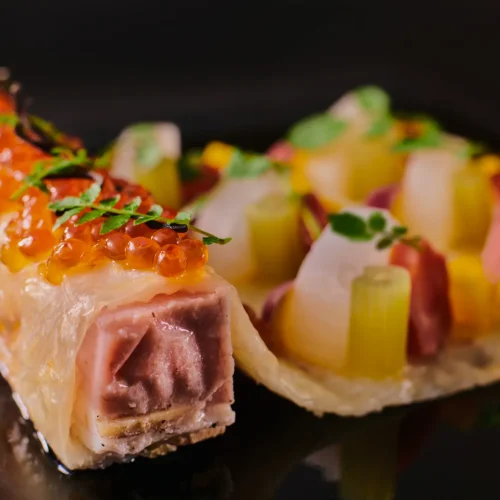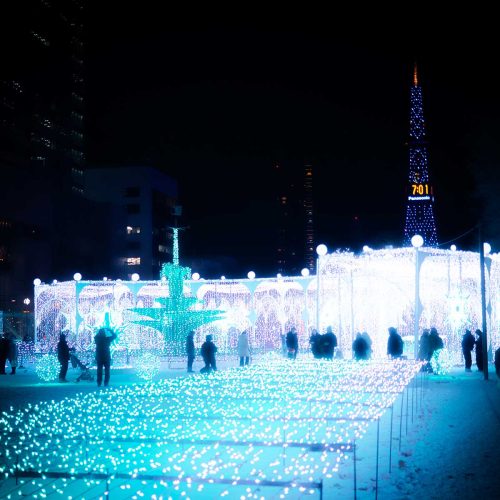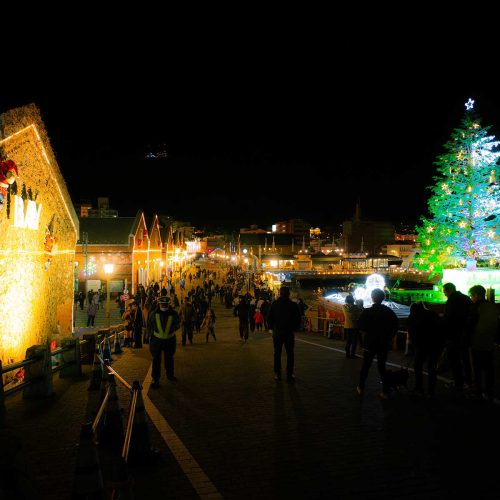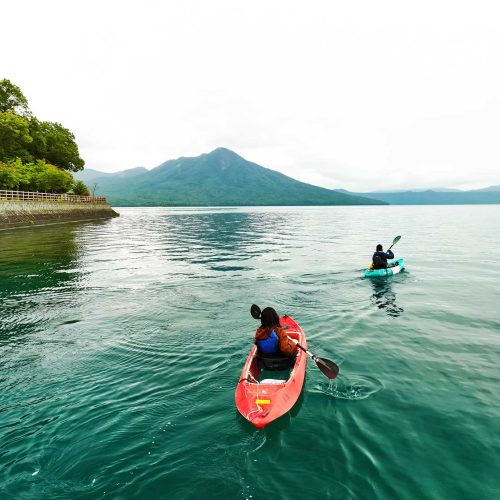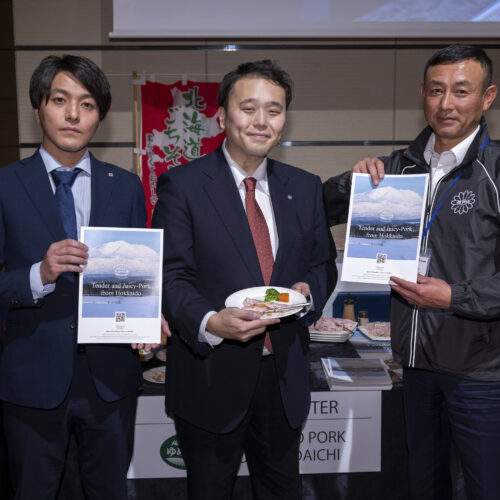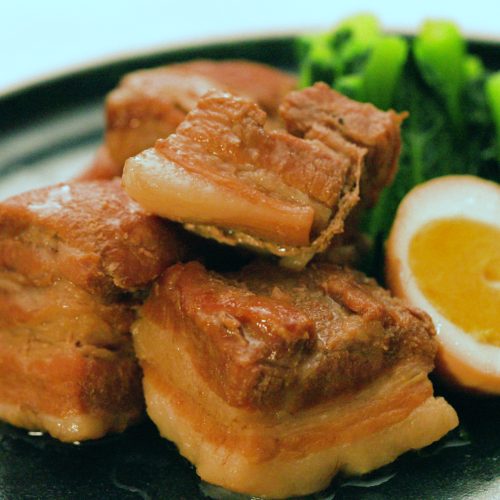- EXPERIENCE HOKKAIDO
Lake Shikotsu, Balancing Tourism and Conservation. -The beauty of the lake seen through a clear kayaking experience-
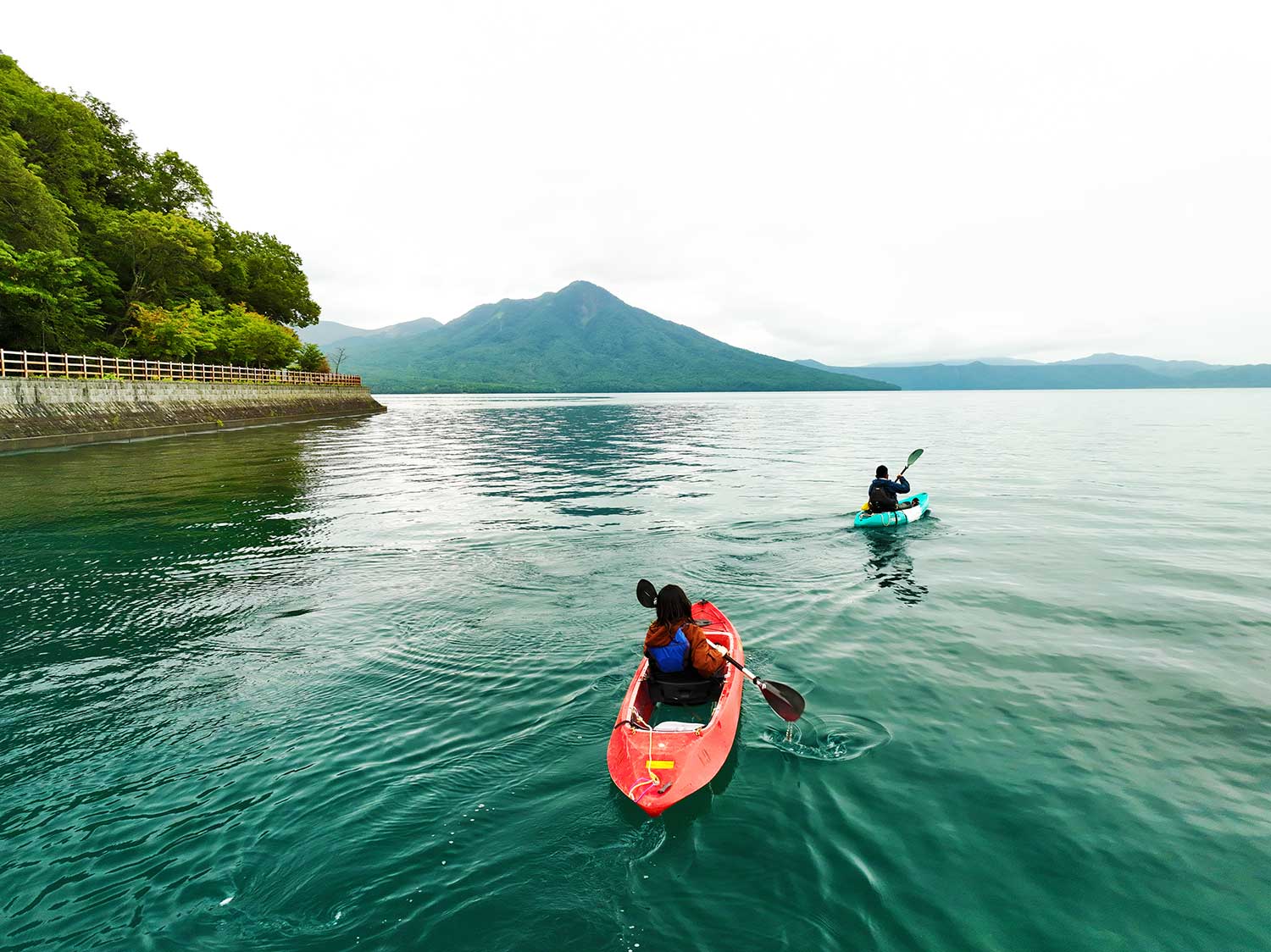
Shikotsu-Toya National Park is one of the six national parks in Hokkaido and is said to be the most visited.
Jozankei, Noboribetsu, Lake Toya, and Mt. Yotei. Lake Shikotsu is one of the most famous caldera lakes in Japan and is known as the northernmost ice-free lake.
With a circumference of 40 km and a volume of 20.9 cubic km, it is second only to Lake Biwa in size, and its water quality has been ranked first for 11 consecutive years. Lake Shikotsu is also known as “Lake Shikotsu Blue,” and many tourists visit the lake every year to see its beauty.
Lake Shikotsu, which offers such magnificent and beautiful natural attractions, offers a variety of activities such as diving, canoeing, and sipping.
This time, we were allowed to board a “clear kayak” provided by Ocean Days. The bottom of the clear kayak is transparent, allowing visitors to see what is going on at the bottom of the lake.
I would like to take a peek at the bottom of the lake, which I have not yet seen, while placing myself in the magnificent nature of this Shikotsu Toya National Park.
INDEX
- Diverse ecosystems are very close to Sapporo
- Achievement of No. 1 water quality in Japan for 11 consecutive years
- Overwhelmed by a world of silence -Clear Kayak Experience
- Gradations that change from moment to moment
- Protecting the beauty of the lake -Blue Frontier Shikotsu
- Creating a system that not only picks up the pieces, but connects them to the future
Diverse ecosystems are very close to Sapporo
Lake Shikotsu is classified as an extremely poor trophic lake, and it is said that there are only two native fish species: the American pike and the Hanakajika. Even including introduced species such as chip (cyprinid) trout, both the number and variety of species are small.
On the other hand, the mountains that form around the lake retain a diverse ecosystem, and if you are lucky, you can see Ezo squirrels, Ezo snow egrets, zebra finches, and many other creatures.
One of the attractions of Lake Shikotsu is that such beautiful and vast nature is only about an hour drive from Sapporo and about 40 minutes from New Chitose Airport.
Mr. Itaya, president of “Lake Shikotsu Ocean Days,” a company that offers activities at Lake Shikotsu, who guided us around the lake, also gave his assurance, saying, “There is probably no other place like it, so close to the airport and surrounded by virgin forest.
Achievement of No. 1 water quality in Japan for 11 consecutive years
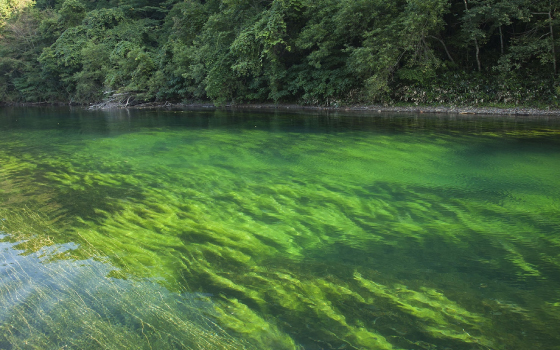
Lake Shikotsu has been ranked No. 1 in water quality (in Japan) for 11 consecutive years. The quality of this “water quality” is simply determined by the amount of organic matter. In other words, the less organic matter, the better the water quality.
Lake Shikotsu is a caldera lake, which means that there are few rivers flowing into the lake. The wastewater from the hot spring resort of Lake Shikotsu is treated at a purification center in downtown Chitose, so it does not flow directly into the lake. In addition, the surrounding forests prevent sediment from flowing into the lake.
These natural conditions and people’s efforts have kept the amount of organic matter low and the water clear.
And the transparency is also high, ranging from 14 to 20 meters, ranking fourth in Japan according to a survey conducted by the Nature Conservation Bureau of the Environment Agency (1991). Water quality may be hard to pinpoint because the amount of organic matter is an indicator, but transparency is clearly visible to the naked eye.
Lake Shikotsu, which offers such magnificent and beautiful natural attractions, offers a variety of activities such as diving, canoeing, and sipping. This time, we were allowed to board a “clear kayak” offered by Ocean Days.
The bottom of the clear kayak is transparent, allowing you to see what is going on at the bottom of the lake. I would like to take a peek at the bottom of the lake, which I have not yet seen, while being immersed in the magnificent nature of Shikotsu-Toya National Park.
Point
The criterion for “water quality” used here is chemical oxygen demand (COD), an indicator of the amount of organic matter in the water; the higher the value, the more polluted the water.
Another method is used for “transparency,” which is measured by submerging a white disk into the water and measuring the depth at which it becomes invisible. It is proven to be clean from both chemical and visual perspectives.
*Reference Hokkaido Research Organization: Lunchtime Seminar (May 15, 2017)”
Overwhelmed by a world of silence
~Clear Kayak Experience

After registering, we moved to the place to board our kayaks with Mr.Itaya guiding us.
Soon after, we arrived at the banks of the Yama-sen Tetsukyo, a red iron bridge over the Chitose River, located down by the lake from the village of Shikotsuko Onsen.
The Yama-sen Tetsukyo was a light railway bridge built in the Taisho Era (1912-1926) to transport lumber used to make paper to a paper mill in Tomakomai City, near Lake Shikotsu. It is still preserved and welcomes visitors to Lake Shikotsu.
After a short lecture on the shore facing the Chitose River by the Yama-sen Tetsukyo, we finally get into our clear kayaks. Our first goal is downstream of the Chitose River.
Although I was a little anxious about riding alone, I was able to try it calmly because Mr. Itaya was nearby and gave me advice as needed, such as, “It feels like you are going quite far back,” and so on. However, it took more strength to paddle than I had expected.
This was my first time in a clear kayak, although I had canoed once before, more than a decade ago. I must confess that I was more preoccupied with the paddle than the scenery for a while, partly because I was not used to it.
By the way, before boarding the boat, I asked Mr. Itaya about this story. The activity of clear kayaking has been offered at Lake Shikotsu for more than 10 years, but even today, it is the only place in Hokkaido where you can experience it.
One would think that users would be enjoying the underwater world at this rare opportunity, but he said, “Some people don’t look down very much because the scenery around them is so beautiful.
Perhaps the best thing about clear kayaking is that there is more than one way to enjoy it. However, I was still concerned about how the underwater world would look like. I boarded the kayak with these thoughts in mind, but as it turned out, I, too, was overwhelmed by the environment of nothing but forest and water on all sides.
Especially on the river, there were only two people, myself and Mr.Itaya. It was as if we were left alone in the midst of the virgin forest that surrounded us.
And perhaps the trees absorb the sound, or perhaps nothing is heard except the sound of the waves hitting the kayak and the pounding in the back of my ears. I was in awe of this space, which would not be possible in everyday life.
Gradations that change from moment to moment
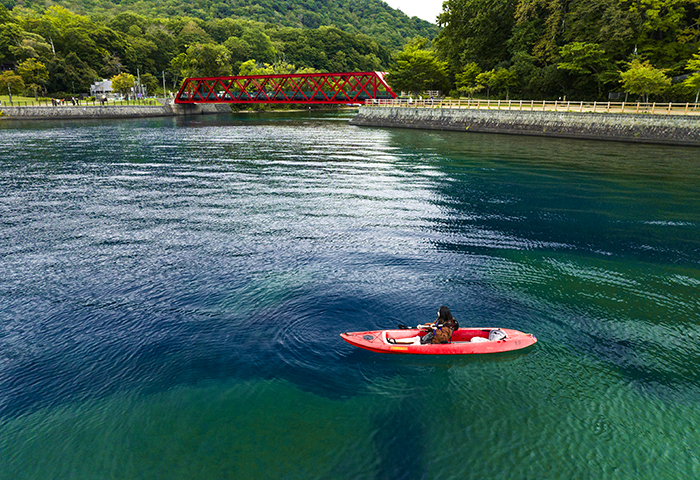
Clear Kayak and Mr.Itaya first met when Mr.Itaya was working as a diving instructor in Okinawa. It was a time when Clear Kayak was attracting attention as an activity that allowed non-divers to experience the Okinawan sea.
Later, when he returned to Hokkaido and came to Lake Shikotsu, he was fascinated by the cleanness of the water and came up with the idea of offering clear kayaking as an activity. When I saw the water quality and clarity, I knew this was clear kayaking.”。
When I became quite familiar with paddle operation, I turned the kayak, which was heading downstream, upstream to Lake Shikotsu. Little by little, I began to be able to look at the bottom of the kayak.
In the shallows, one could see the blue-green color of the waterweeds growing on the river bottom, which tinted the water. As the water gets deeper, the color changes to a mixture of gray and blue, and the white of the fallen trees on the bottom looks like a light shining dimly.
Then, when we went out to the lake, the entire surface was a dark blue world. It was interesting to visually feel the degree of depth, and I felt that this was also due to the high degree of transparency.
It was cloudy that day, so we could not see the bottom of the mountain, but we might have had a different view if the sky had been clear.
As you pass under the Yama-sen Tetsukyo from the Chitose River and emerge onto Lake Shikotsu, you are relieved to feel the liveliness of the tourists who stand by the lakeside. Along with that, the sound of the wind is heard in my ears as the space is opened up.
However, despite the presence of such sounds, the impression that comes to mind is strangely “quiet.
Cut off from all other living things, all you have is your own body. And using that whole body to glide across the surface of the water – it was an experience that made such simplicity seem so precious.
Protecting the beauty of the lake
~Blue Frontier Shikotsu
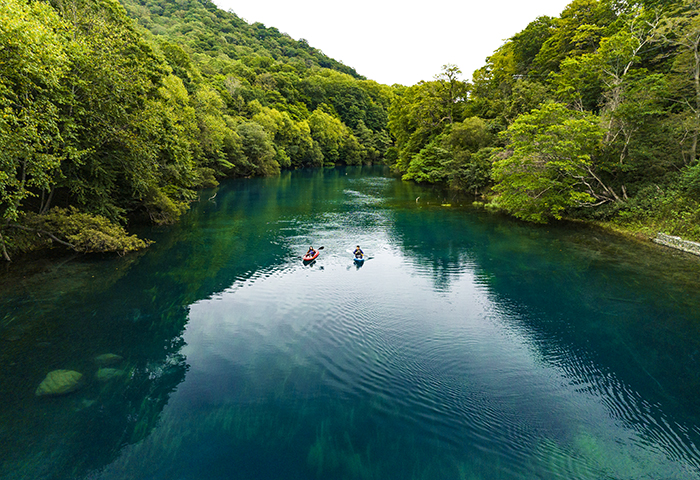
After the experience, I could feel the nature around Lake Shikotsu with my whole body. However, Mr. Itaya is not only involved in this kind of nature experience, but also in activities to protect this beauty and pass it on to the next generation. This is the “Blue Frontier Shikotsu” cleanup project.
Although clean on the surface, the reality is that the ecosystem is being destroyed by humans at the bottom of the lake. Ghost fishing is a prime example of this, also known as “ghost fishing,” in which wildlife is caught and killed by fishing gear left in the water.
Mr. Itaya was aware of this situation from early on and thought something had to be done. If there is trash, divers basically pick it up,” he said.
But now, with the SDGs and such, we live in an age where we can communicate. The Corona disaster coincided with that, and I had a hazy feeling that I wanted to leave something behind next.
Creating a system that not only picks up the pieces, but connects them to the future
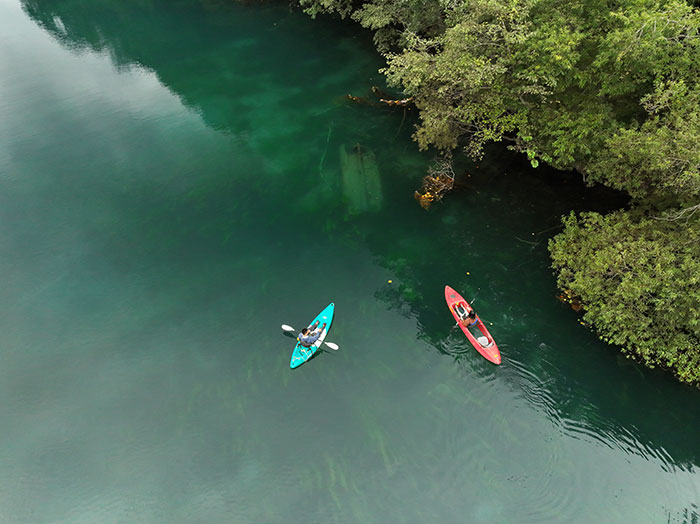
In addition to divers cleaning up the lake bottom, Blue Frontier Shikotsu is using GIS (Geographic Information System) to create data on the underwater environment. The project has established a system with co-operators to record garbage retention points on the GIS and share them on Google Maps.
This way, we don’t end up picking up what is there, but can connect it to the next generation. It would be easy to leave them with pictures, but I think it would be better to convert them into data for the first year, the second year, ……, and so on. I feel that we need to create something that will remain in the future.
Not only is the GIS-based system groundbreaking, but according to Itaya, cleaning the bottom of the lake itself is rare. However, the system is not limited to Lake Shikotsu alone. “We have talked about teaching the system itself free of charge,” he says, “and we are eager to expand the system outside of the lake. In fact, he has been actively involved in the project, giving lectures and training at JICA (Japan International Cooperation Agency) and other events.
I think that the future of the world lies in how to strike a balance between tourism, the local community, and the SDGs,” said Mr.Itaya. In addition to the aforementioned JICA project, Mr. Itatani has also planned to conduct international social contribution activities in Mauritius in 2022. Mr. Itaya’s vision is not limited to the domestic market, but has already turned his attention to the world.
We must pass on “nature as it is” to people and pass the baton to the next generation. This kind of “balance between tourism and preservation” is becoming more and more important in this day and age. Lake Shikotsu is one of the starting points for such efforts, and I felt that I could see how the circle of such efforts will continue to expand in the future through this visit.
Assistance in news gathering

Ocean Days Corporation (Clear Kayak)
〒066-0281 Shikotsuko Onsen Bangaichi, Chitose City, Hokkaido TEL 080-6073-8600
&
●Shikotsu Toya National Park Management Office ●Lake Shikotsu Visitor Center
●Chitose Sub-branch, Sapporo Construction Management Department, Hokkaido Sorachi General Promotion Bureau ●Road Management Division, Construction Department, Chitose City
Editor

MITANI Noa
Essayist
Born and raised in Hokkaido. She loves to eat, and has an eye for sweets, bread, and pumpkins. She has a particularly strong passion for pumpkins, and her table tends to be yellow during the pumpkin season.
At the Hokkaido Digital Picture Book Contest, she won the Excellence Award (1st) and the Special Award (2nd) (both for confabulation).

